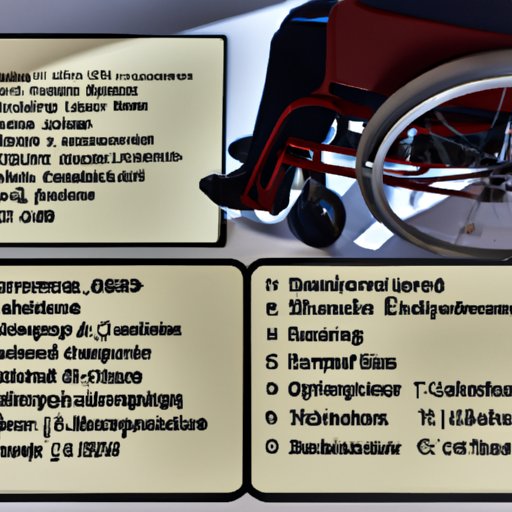Introduction
Disability is a term used to describe a physical or mental impairment that limits a person’s ability to perform day-to-day activities. There are many different types of disabilities, including developmental, cognitive, sensory, physical, and psychiatric disabilities. People with disabilities may experience limitations in their ability to work, participate in education, and engage in other activities of daily living. This article will explore how does disability work, examining the process of obtaining disability benefits, understanding disability laws and regulations, assessing the role of the Social Security Administration, and examining the impact of disability on employment opportunities.

Exploring the Process of Obtaining Disability Benefits
In order to qualify for disability benefits, an individual must meet certain criteria set by the Social Security Administration (SSA). These criteria include having a physical or mental condition that prevents the applicant from engaging in any substantial gainful activity, having a condition that has lasted or is expected to last at least 12 months, and having a medical condition listed in the SSA’s Listing of Impairments. To apply for disability benefits, an individual must complete an application form and submit it to the SSA. Applicants must also provide evidence of their medical condition, such as medical records and test results.
Once the application is submitted, the SSA will review the information provided and determine whether the applicant meets the requirements for disability benefits. If the applicant is approved, he or she will receive a monthly payment from the SSA. The amount of the payment will depend on the applicant’s income and other factors. In some cases, applicants may be required to undergo a medical examination to determine if they are eligible for disability benefits.

A Guide to Understanding Disability Laws and Regulations
The federal government, state governments, and local governments all have laws and regulations related to disability. The federal government has enacted several major disability laws, such as the Americans with Disabilities Act (ADA) and the Rehabilitation Act of 1973. These laws protect people with disabilities from discrimination in employment, education, public services, and other areas. Additionally, states and local governments may have their own laws and regulations related to disability.
The ADA prohibits employers from discriminating against qualified individuals with disabilities in hiring, promotion, and other terms and conditions of employment. The law also requires employers to make reasonable accommodations for employees with disabilities. For example, an employer may need to provide wheelchair access to a workplace or allow an employee to work from home if necessary.
Examining the Role of Social Security Administration in Disability Benefits
The Social Security Administration (SSA) is responsible for administering two programs that provide financial assistance to people with disabilities: Social Security Disability Insurance (SSDI) and Supplemental Security Income (SSI). SSDI is available to individuals who have worked and paid Social Security taxes and are now unable to work due to a disability. SSI is available to individuals who are disabled and have limited resources and income.
To qualify for either SSDI or SSI, an individual must meet certain criteria set by the SSA. This includes proving the existence of a medically determinable physical or mental impairment that prevents the applicant from engaging in any substantial gainful activity. Applicants must also provide evidence of their medical condition, such as medical records and test results.

The Effects of Disability on Employment Opportunities
People with disabilities often face challenges when seeking employment. The Americans with Disabilities Act (ADA) provides protections for individuals with disabilities in the workplace. Under the ADA, employers are prohibited from discriminating against qualified individuals with disabilities in hiring, promotion, and other terms and conditions of employment. Employers must also provide reasonable accommodations for employees with disabilities, such as providing wheelchair access to the workplace or allowing an employee to work from home if necessary.
Additionally, the ADA requires employers to make reasonable efforts to recruit, hire, promote, and retain individuals with disabilities. This includes providing job training and development opportunities for individuals with disabilities and providing support for employees with disabilities to help them succeed in their jobs.
Conclusion
This article has explored how does disability work, examining the process of obtaining disability benefits, understanding disability laws and regulations, assessing the role of the Social Security Administration, and examining the impact of disability on employment opportunities. Disability can be a difficult issue to navigate, but understanding the process can help individuals with disabilities obtain the benefits and protections they need.
(Note: Is this article not meeting your expectations? Do you have knowledge or insights to share? Unlock new opportunities and expand your reach by joining our authors team. Click Registration to join us and share your expertise with our readers.)
